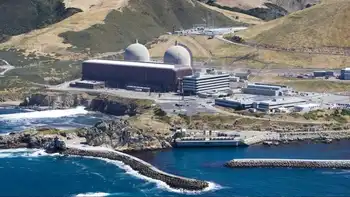Wind groups relieved sage grouse not listed
WASHINGTON, D.C. - An Interior Department announcement that it won't list sage grouse as an endangered or threatened species opens the way for continued development of the West's wind energy and oil and gas industries.
Those industries will still face scrutiny in sage grouse habitat but much less so than if the bird were listed.
The government concluded that listing the chicken-sized brown bird as threatened or endangered is warranted but precluded by higher priorities — other species considered in greater danger.
But Interior will classify the bird among species that are candidates for federal protection, which are assigned a priority number between one and 12. The sage grouse has been given an eight, putting it two-thirds of the way down the scale as a priority for federal protection.
Sage grouse have experienced a 90 percent decline in their numbers and a 50 percent decline in their sagebrush habitat from a century ago, Interior Secretary Ken Salazar said at a news conference.
But the bird populations have been relatively stable over the last decade thanks to efforts by states such as Wyoming, Idaho and Montana to protect the species and its habitat, he said.
"Frankly, it is the states in the Western part of the United States that have developed the right kind of strategies to confront this challenge," Salazar said.
Sage grouse inhabit large portions of Wyoming, Nevada, Montana, Oregon and Idaho, and smaller areas of Colorado, Utah, California, Washington, South Dakota, North Dakota and western Canada.
Especially in Wyoming, large areas of sage grouse habitat also are prime spots for natural gas development that has boomed in recent years. In Nevada, the birds are challenged by an invasive species, cheatgrass, which is prone to frequent wildfires that burn up native sagebrush.
Wyoming, home to an estimated one-half of North America's sage grouse, has been mapping the bird's habitat, studying it and taking other steps to better understand how to protect the species and avoid an endangered listing — efforts that Gov. Dave Freudenthal said have paid off.
"The candidate listing gives us a fighting chance, while an endangered or threatened listing would have taken the wind out of our sails," he said in a release.
Some environmentalists were less pleased.
The finding shows the government is willing to protect sage grouse but not willing to do what's necessary, said Jon Marvel, executive director of the Hailey, Idaho-based Western Watersheds Project.
"None of the actions proposed to date are mandatory, and that undermines the commitment for improving conditions for sage grouse," Marvel said.
The announcement results from a lawsuit that Western Watersheds filed in 2006. A federal judge in Boise, Idaho, ruled the following year that political pressure tainted an earlier decision not to list the sage grouse.
The finding effectively ends the group's lawsuit, Marvel said.
Other groups expressing disappointment included the Biodiversity Conservation Alliance and the American Bird Conservancy.
Laurie Milford, executive director of the Wyoming Outdoor Council, said the finding "makes a certain amount of sense," while Frank Gill, president and CEO of the National Audubon Society, said Interior is "on the right path."
The Independent Petroleum Association of Mountain States worries the finding could inhibit oil and gas development on public lands in the West, said the group's director of government affairs, Kathleen Sgamma.
"But it appears that Interior plans to balance implementation so that restrictions on energy development do not apply with a broad brush across the entire region," she said.
The Interior Department recognizes the need to develop the nation's energy resources, said Assistant Interior Secretary for Fish, Wildlife and Parks Tom Strickland.
"We know that without good planning, energy activities can impact the sage grouse," he said. "The emphasis here is on smart from the start. We plan in advance."
For the wind energy industry, sage grouse are a concern because the birds don't nest near tall structures such as wind turbines and power lines for fear they could be perches for eagles and other predators.
The Interior announcement is a relief and offers more certainty for wind power, said Craig Cox, executive director of the Interwest Energy Alliance, a wind energy industry group.
"I do hope that as we gain more experience with the impact of wind on sage grouse, that we can develop plans accordingly," Cox added.
The oil and gas industry has been backing important sage grouse research and will continue to do that to help ensure that the species isn't listed, said Cheryl Sorenson, vice president of the Petroleum Association of Wyoming.
"For us, it's not like, ‘Whew, we've won one.’ It's like, ‘OK, we need to keep rolling on this,’" Sorenson said.
Related News

Cost, safety drive line-burying decisions at Tucson Electric Power
TUCSON - Though wildfires in California caused by power lines have prompted calls for more underground lines, Tucson Electric Power Co. plans to keep to its policy of burying lines selectively for safety.
Like many other utilities, TEP typically doesn’t install its long-range, high-voltage transmission lines and distribution equipment underground because of higher costs that would be passed on to ratepayers, TEP spokesman Joe Barrios said.
But the company will sometimes bury lower-voltage lines and equipment where it is cost-effective or needed for safety, or if customers or developers are willing to pay the higher installation costs
Underground installations generally include additional engineering…




